Do you know NASA, Google, Facebook, Netflix and many more top companies use Python to design their products? Data Sciene, Machine Learning, and Artificial Intelligence concepts are also heavily dependent on Python. It is one of the most popular programming languages to learn in 2023. There are several integrated development environments explicitly designed for it. Choosing the right tools can help programmers with coding and overall productivity. In this article, we will be covering the best Python IDE and codes to follow in 2023.
Table of contents
What is an IDE?
An Integrated Development Environment is an application that provides a comprehensive set of tools for software development. An IDE typically includes:
- Code Editor
- Debugger
- Compiler or Interpreter
- Other tools specific to the programming language being used.
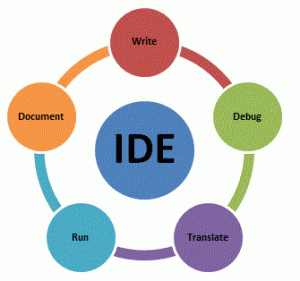
Python IDEs make the software development process more efficient by providing a centralized location for all the tools and resources needed to write, test, and debug code. With an IDE, developers can write, run, and debug code all in one application, saving time and making the development process more efficient. Additionally, many IDEs provide code highlighting, code completion, and error checking, which can help to prevent mistakes and improve code quality. Master Python IDEs can not only help you in software development but also sharpen your Data Science skill set.
What are Code Editors?
A Code Editor is a basic text editor designed specifically for software development. It provides features such as code highlighting, indentation, and code completion but typically only includes some of the features that an IDE provides. Code editors are commonly used by developers who prefer a lightweight and simple tool or work on smaller projects.

What is the Difference Between IDEs and Code Editors?
Refer to the image below to know more about Python IDEs vs Code Editors differences –
| Python IDEs | Code Editors |
| Comprehensive software development tools that combine a code editor, tools and debugging capabilities | Lightweight software that provides basic code editing features |
| Advanced features such as code refactoring, code completion, and code navigation | Basic features such as syntax highlighting and code folding |
| Support for multiple languages, including complex languages such as Java and C# | Support for multiple languages, but may not have advanced features for more complex languages |
| High resource usage due to multiple features | Low resource usage, making them faster and more efficient |
| Steeper learning curve due to the multitude of features | Easier learning curve due to the simplicity of the tool |
| Highly customizable and can be configured to suit specific development needs | Customizable to a lesser extent, but still can be configured with plugins and extensions |
| Used by professional developers and large development teams | Used by beginner developers and small development teams |
| Examples – Eclipse, Visual Studio, NetBeans | Examples – Sublime Text, Atom, Notepad++ |
Features of IDEs
- Code Editing: Python IDEs typically include a code editor with features such as syntax highlighting, code completion, and code formatting to make coding easier and more efficient.
- Debugging: They provide debugging tools to help developers identify and fix bugs in their code.
- Build Tools: They often include build tools that automate the build process, allowing developers to build, test, and deploy their code with ease.
- Version Control: Python IDEs often integrate with version control systems, allowing developers to manage their code changes and collaborate with others on the same codebase.
- Code Navigation: They provide features to help developers navigate their codebases, such as code indexing, file navigation, and code search.
- Refactoring: They provide tools for refactoring code, making it easier to restructure code and improve its quality without changing its behavior.
- Language-specific Tools: Python IDEs are often tailored to specific programming languages, providing language-specific features such as syntax checking, code generation, and code analysis.
- Plug-ins and Extensions: They can be extended with plug-ins and extensions to add additional functionality or support for different programming languages.
- User Interface Customization: They often allow developers to customize their user interface to suit their preferences and working style.
Understanding Unit Test framework and Test Driven Development is as important as knowing about best Python IDEs. Read the article to know more!
11 Best Python IDEs and Code Editors in 2023
Python IDEs have their strengths and weaknesses, and the best choice for you will depend on your specific needs and preferences. Check out the best Python IDEs to use in 2023:
PyCharm
PyCharm is a popular Python IDE that provides code analysis, debugging, refactoring tools, and support for web development frameworks such as Django and Flask. You can find the PyCharm python script below –
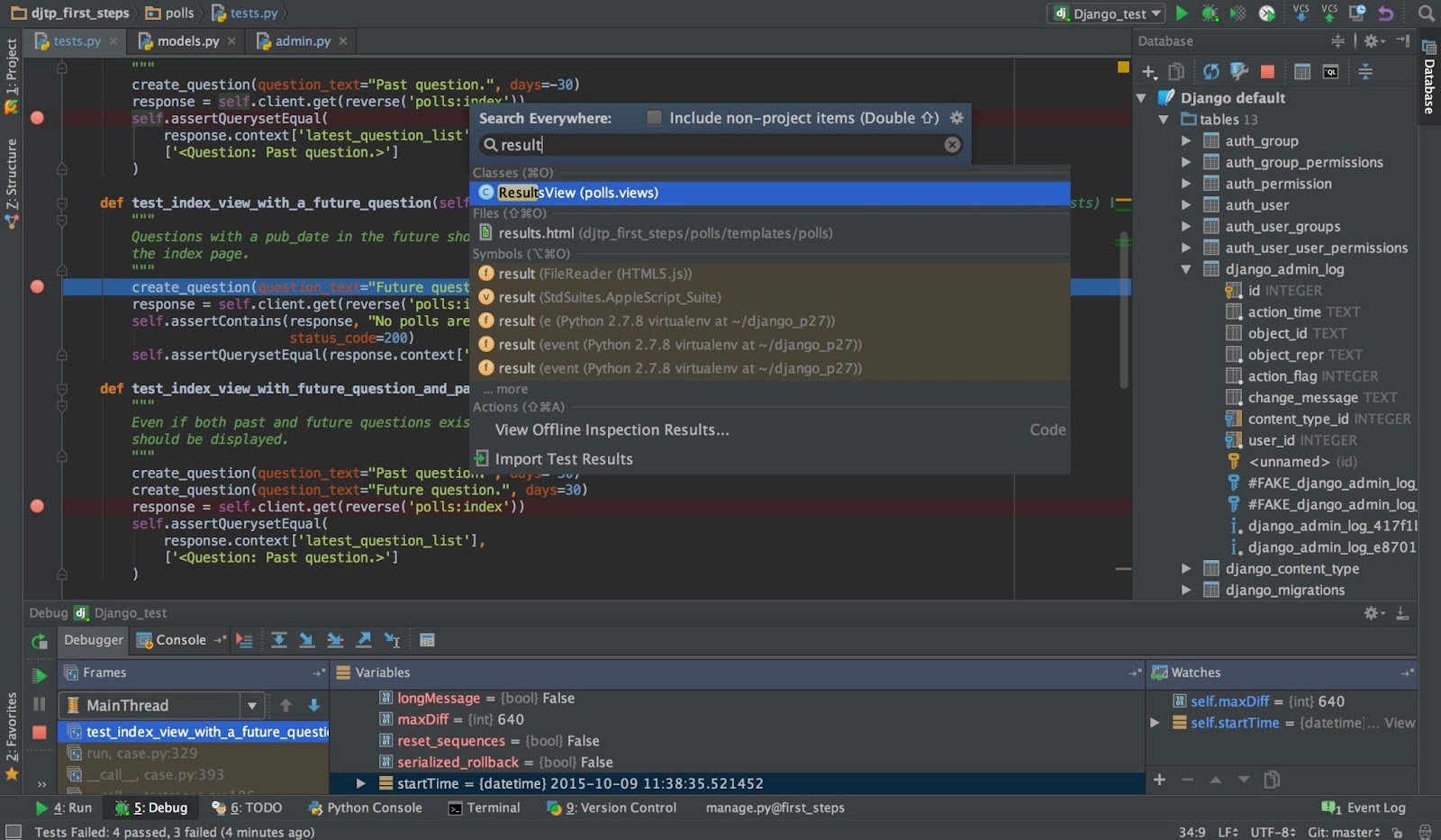
- Cost: Free and paid versions available
- OS: Windows, macOS, Linux
- Pros: Excellent code completion, smart refactoring, built-in debugging and testing tools, integration with web development frameworks, and plugins for additional functionality.
- Cons: Can be resource-intensive and has a steep learning curve.
- Official Website: https://www.jetbrains.com/pycharm/
Visual Studio Code
Visual Studio Code is a lightweight and versatile code editor that offers excellent support for Python development with features like debugging, IntelliSense, and Git integration. It is one of the best free Python IDEs. You can find the python editor tutorial below –
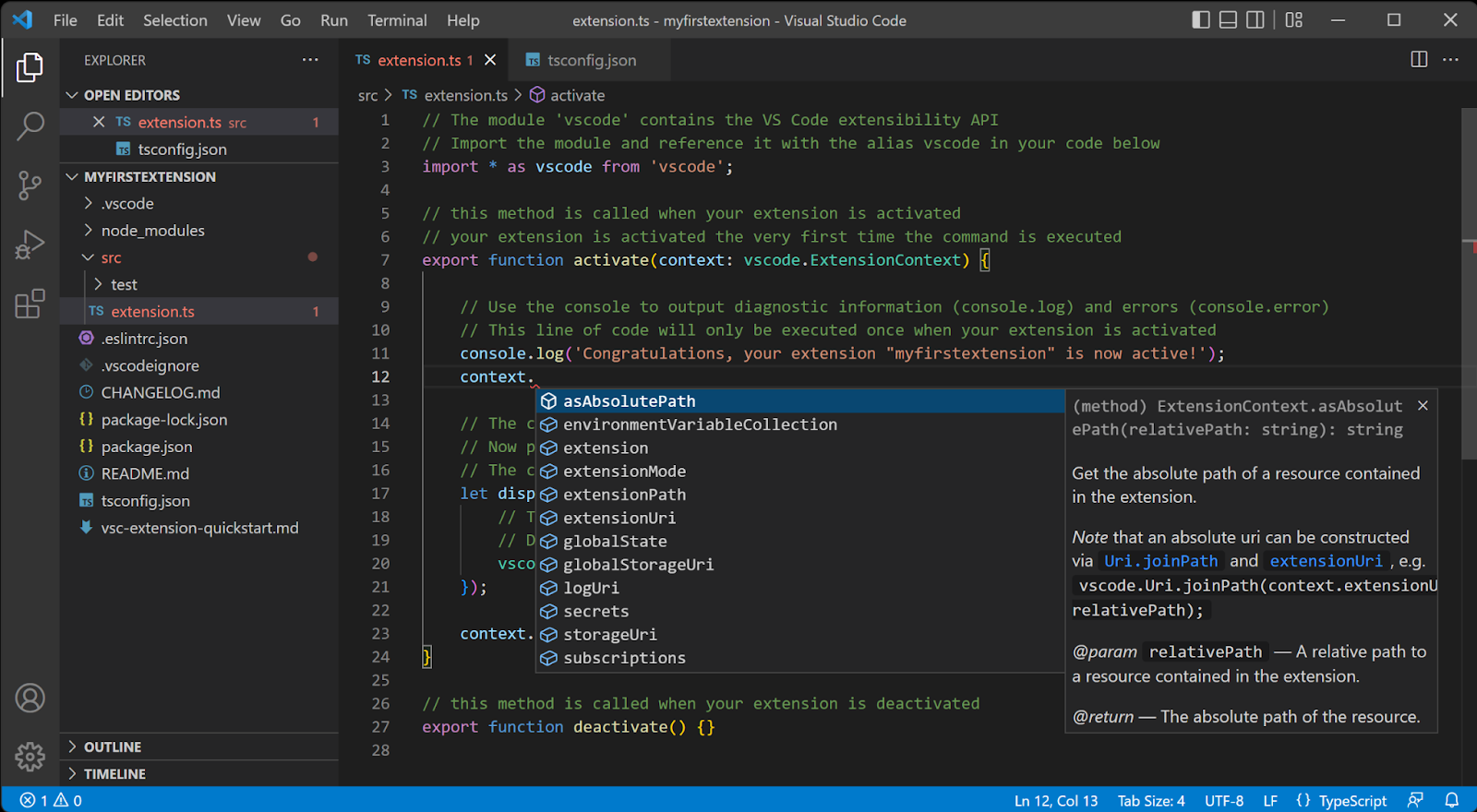
- Cost: Free
- OS: Windows, macOS, Linux
- Pros: Lightweight, customizable, supports a wide range of programming languages, including Python, built-in debugging and Git integration, and a large library of extensions and plugins.
- Cons: Not as feature-rich as full-fledged IDEs, and some plugins may have compatibility issues with updates.
- Official Website – https://code.visualstudio.com/
Spyder
Spyder is an open-source scientific Python IDE, which is especially popular among data scientists and researchers. It includes tools for interactive data exploration, visualization, support for the scientific Python ecosystem, and has an ipython shell. You can find the python script below –
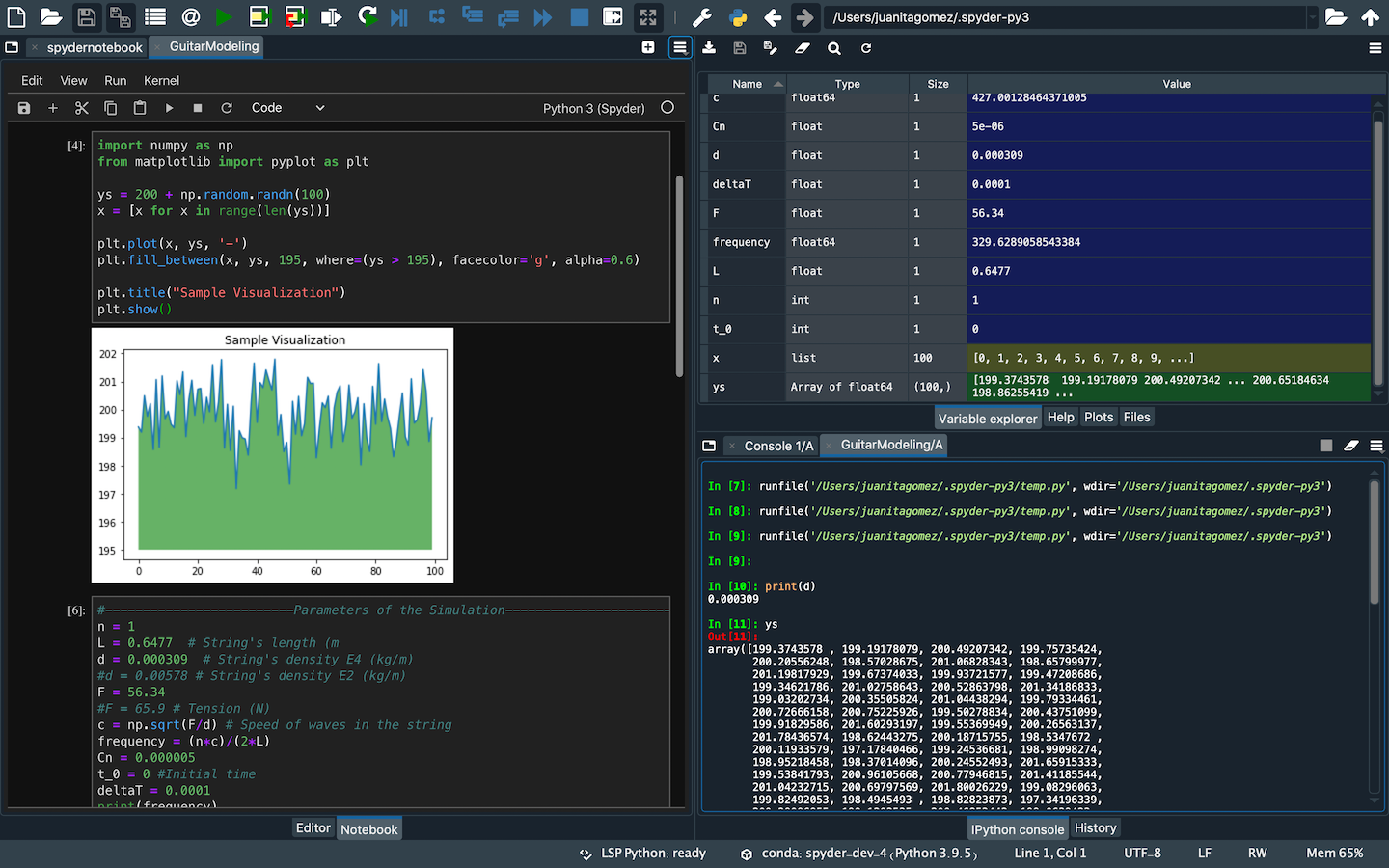
- Cost: Free
- OS: Windows, macOS, Linux
- Pros: Scientific IDE with built-in support for data exploration and visualization, integration with scientific Python libraries, and a user-friendly interface.
- Cons: Not as versatile for non-scientific Python projects, and may not have as many third-party plugins as other IDEs.
- Official Website – https://www.spyder-ide.org/
Sublime Text
Sublime Text is a fast and customizable code editor that offers a wide range of features, including code highlighting, snippets, macros, and support for multiple programming languages, including Python.
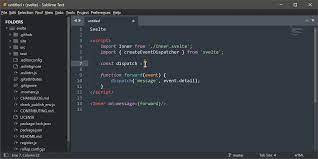
- Cost: Free with limited features, $80 for a license
- OS: Microsoft Windows, macOS, Linux
- Pros: Fast, customizable, supports multiple programming languages, including Python, and has a large collection of plugins and themes available.
- Cons: Does not have built-in debugging tools or other advanced features of full-fledged IDEs.
- Official Website – https://www.sublimetext.com/
Atom
Atom is an open-source code editor that offers customizable themes, syntax highlighting, and support for various programming languages, including Python. It also includes a wide range of third-party packages and plugins that can extend its functionality.
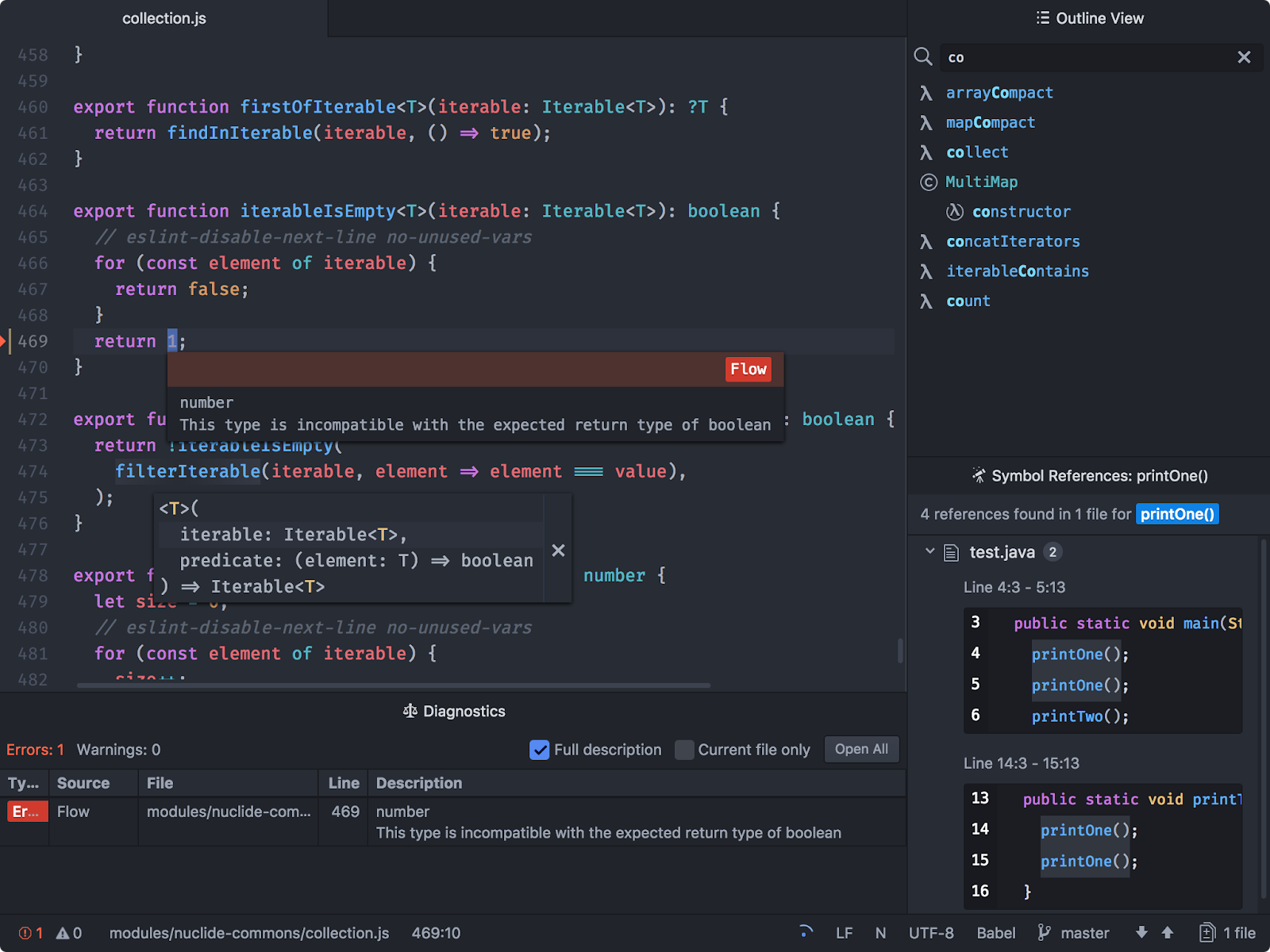
- Cost: Free
- OS: Windows, macOS, Linux
- Pros: Open-source and highly customizable, supports multiple programming languages, including Python, and has a large library of third-party packages and plugins.
- Cons: Can be resource-intensive and may have performance issues with large projects.
Jupyter Notebook
Jupyter Notebook is a web-based interactive data analysis and visualization environment which supports various programming languages, including Python. Considered the best free Python IDE, it allows users to create and share documents containing live code, equations, visualizations, and narrative text.

- Cost: Free
- OS: Web-based, accessible from any device with a web browser
- Pros: Provides an interactive web-based environment for data exploration and visualization, supports multiple programming languages, including Python, and can be easily shared with others.
- Cons: Not as powerful or feature-rich as full-fledged IDEs, and can be less suitable for large-scale software development.
- Official Website – https://jupyter.org/
IDLE
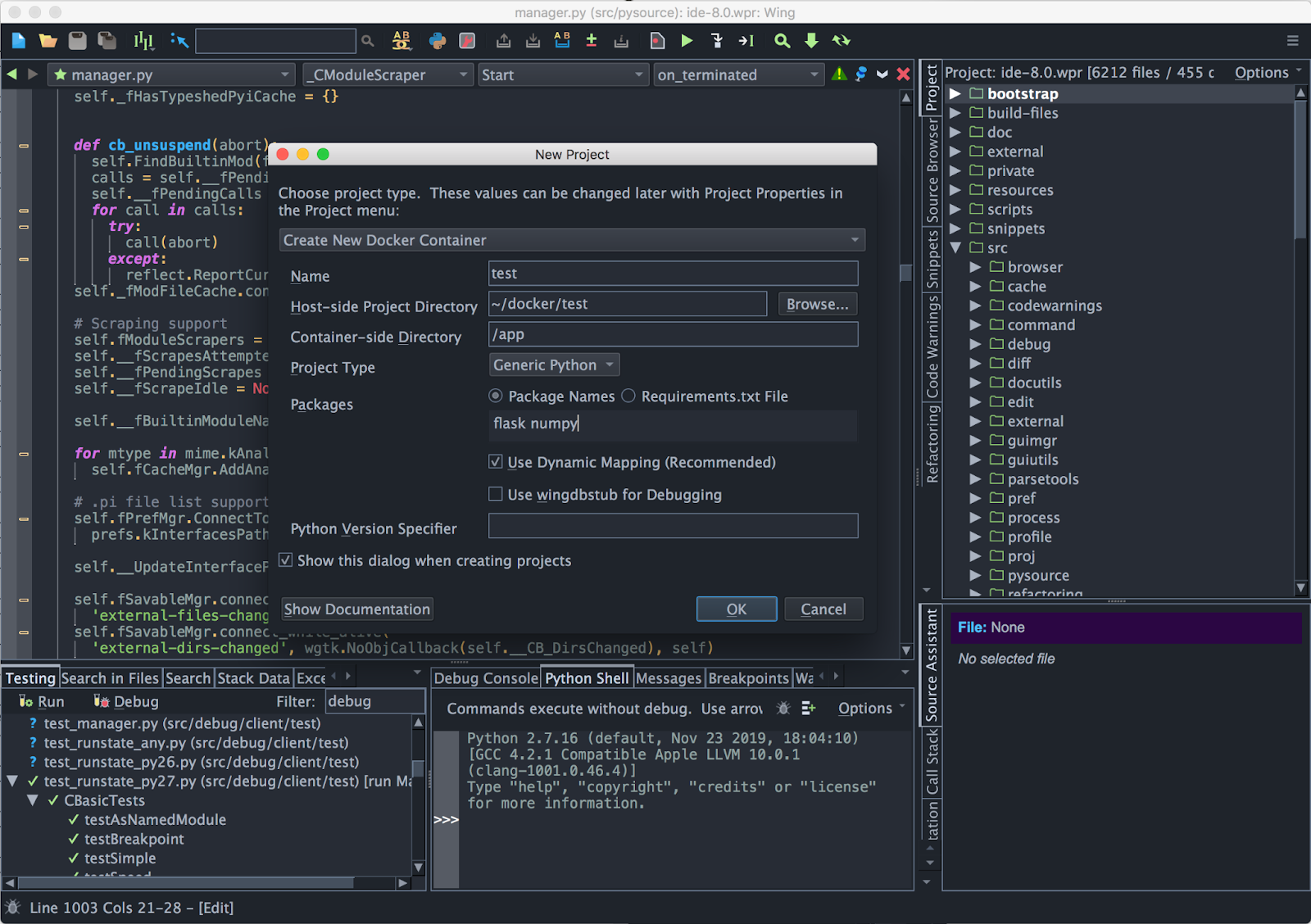
IDLE is an essential integrated development environment with the Python programming language. It provides basic features such as syntax highlighting, code completion, and debugging tools.
- Cost: Free (included with Python distribution)
- OS: Microsoft Windows, macOS, Linux
- Pros: Basic and easy to use, with support for syntax highlighting, code completion, and debugging tools.
- Cons: Lacks more advanced features of full-fledged IDEs, and may not be suitable for large-scale projects.
- Official Website – https://docs.python.org/3/library/idle.html
Wing IDE
Wing IDE is a powerful and feature-rich IDE for Python development, which provides advanced debugging, testing, and code analysis tools. It also includes support for web development frameworks such as Django and Flask.
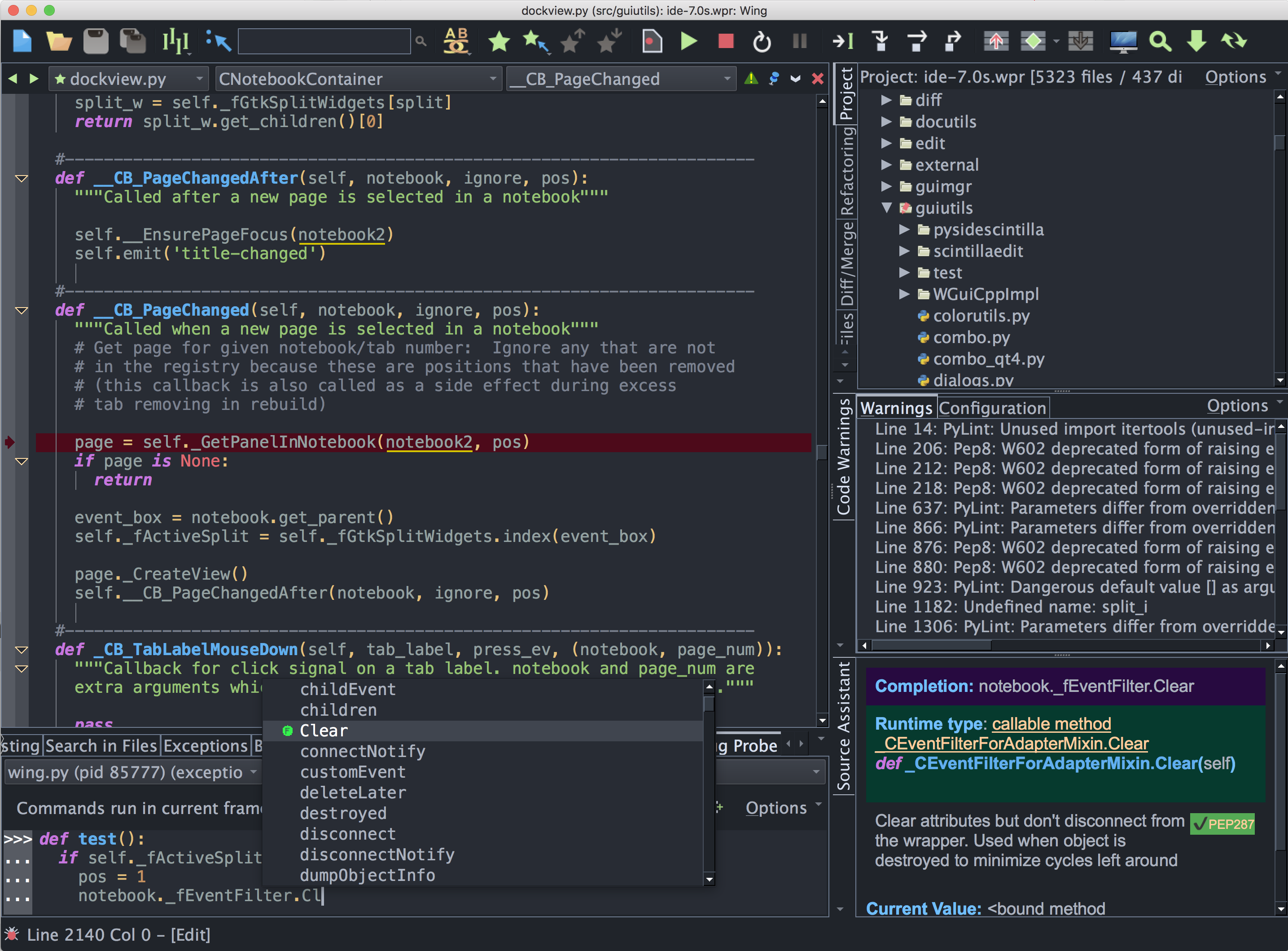
- Cost: Free and paid versions available
- OS: Windows, macOS, Linux
- Pros: Provides powerful debugging and testing tools, supports web development frameworks such as Django and Flask, and has a user-friendly interface.
- Cons: Paid version may be expensive, and the free version may have limited functionality.
- Official Website – https://wingware.com/
Emacs
Emacs is a highly customizable text editor that supports various programming languages, including Python. It includes a wide range of plugins and packages that can extend its functionality and powerful tools for code navigation and editing. It is considered to be among the best free python IDEs.
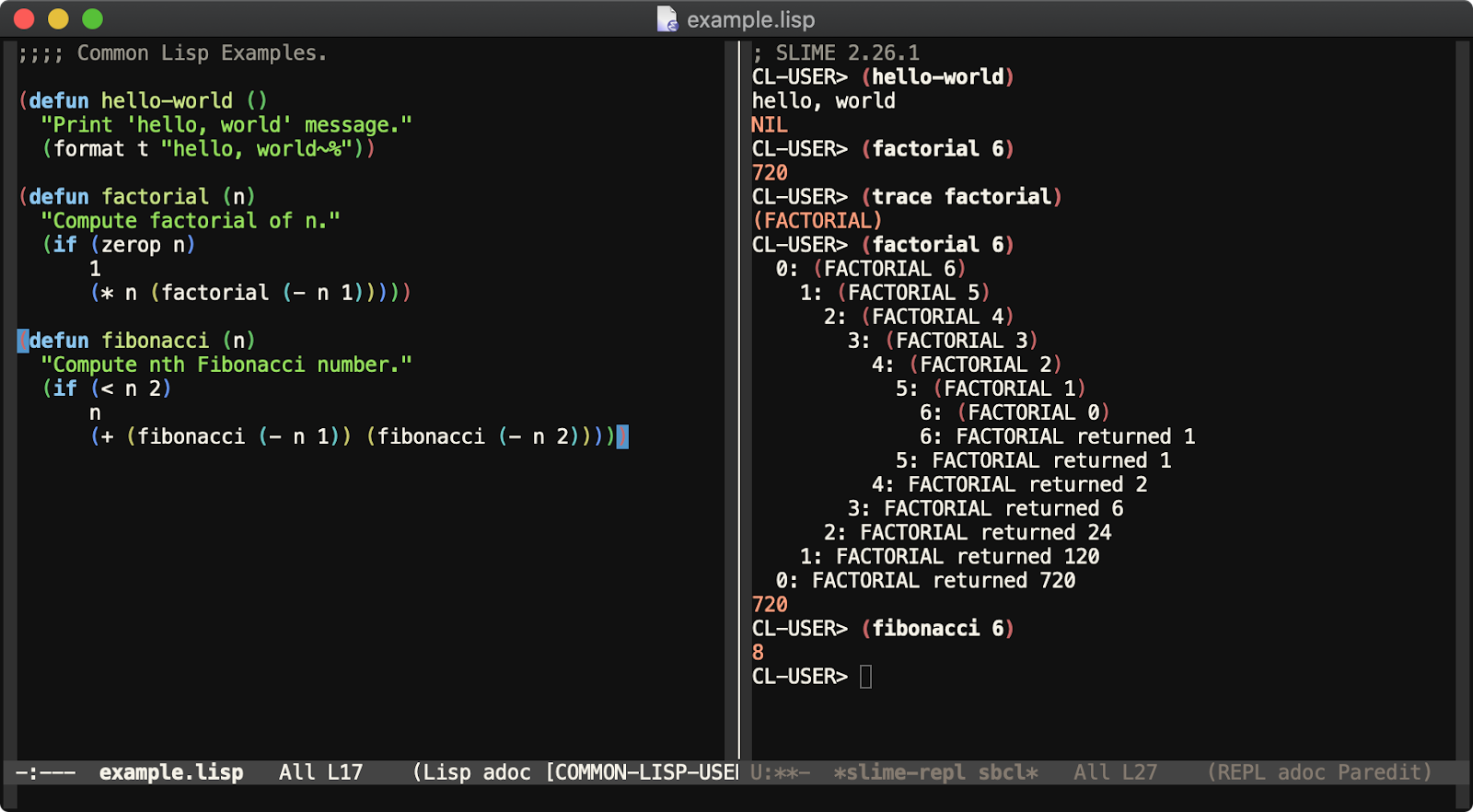
- Cost: Free
- OS: Microsoft Windows, macOS, Linux, BSD, and other Unix-like systems
- Pros: Highly customizable and extensible, supports a wide range of programming languages including Python, includes powerful editing features, and can be used for tasks beyond coding such as email and text editing.
- Cons: Has a steep learning curve, and the customization process can be time-consuming.
Komodo IDE
Komodo IDE is a professional-grade IDE that supports multiple programming languages, including Python. It includes features such as debugging, code profiling, and collaboration tool, making it a popular pick amongst all Python IDEs.
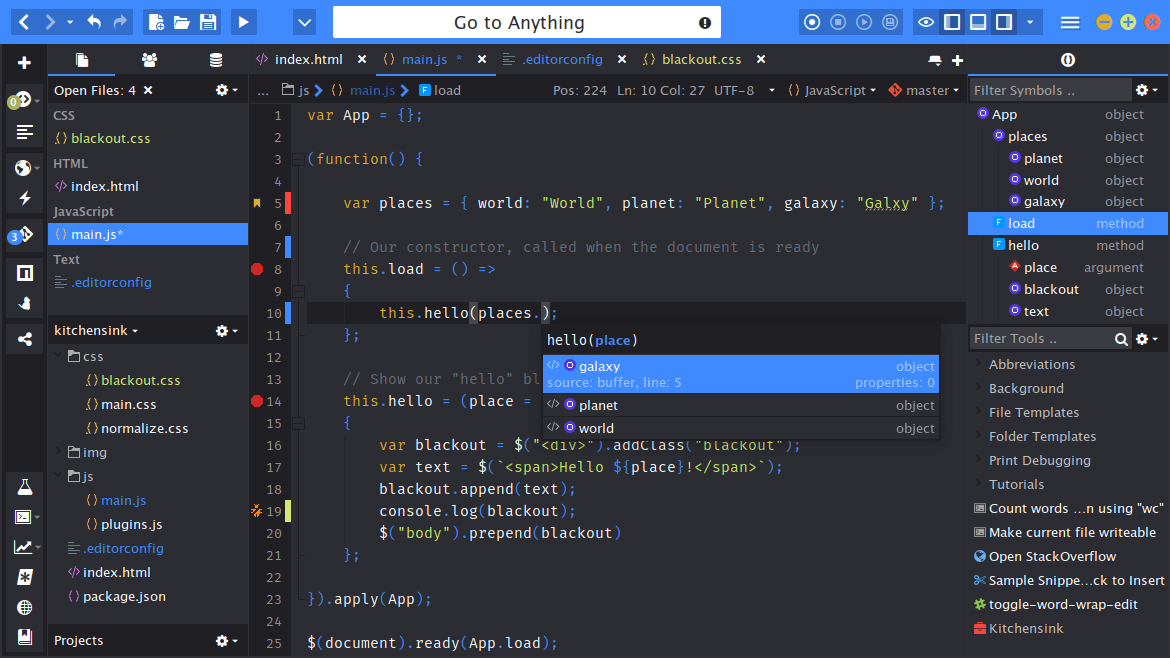
- Cost: Free and paid versions available
- OS: Microsoft Windows, macOS, Linux
- Pros: Offers a full-featured environment for Python and other languages, with built-in debugging and testing tools, support for web development frameworks, and a user-friendly interface.
- Cons: The paid version may be expensive, and the free version may have limited functionality.
- Official Website – https://www.activestate.com/products/komodo-ide/
PyDev
PyDev is an open-source IDE for Python development built on the Eclipse platform. It supports debugging, code completion, refactoring, interactive console and integration with various web development frameworks.
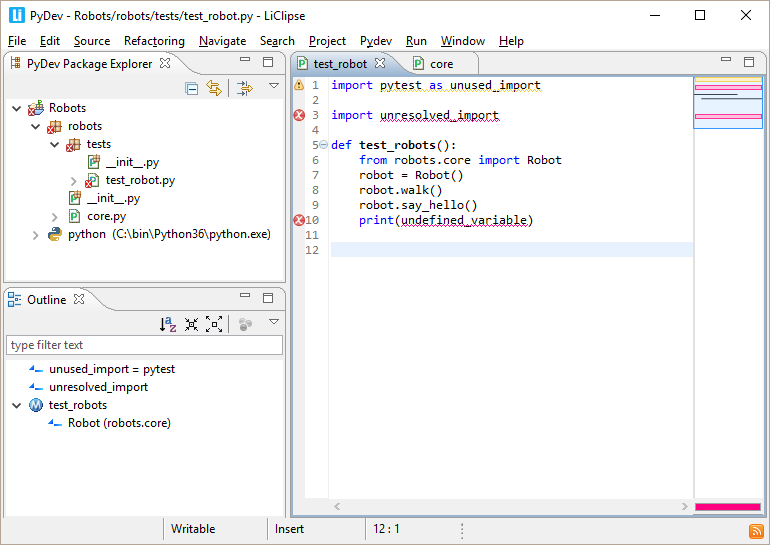
- Cost: Free
- OS: Windows, macOS, Linux
- Pros: A plugin for the Eclipse IDE that provides a full-featured environment for Python development, with code completion, debugging tools, and support for web development frameworks such as Django and Flask.
- Cons: May be resource-intensive, and has a learning curve associated with learning the Eclipse IDE.
- Official Website – https://www.pydev.org/
Liking our Python IDEs breakpoints? Read our latest article on Awesome Python Packages and Example Projects to Build!
How to Pick a Good Python Coding Environment?
Several criteria define a good Python coding environment, but here are three important ones:
- Ease of Use: A good Python coding environment should be user-friendly and easy to navigate. It should have an intuitive interface that lets you quickly locate and access the needed features.
- Flexibility and Customization: A good Python coding environment should allow you to customize and configure it to suit your specific needs. This includes adding plugins or extensions, changing themes, and adjusting the layout to suit your preferences.
- Features and Functionality: A good Python coding environment should provide all the necessary parts and functionality you need to be productive. This includes syntax highlighting, auto-completion, debugging tools, version control, and other features that can help you write, test, and debug code more efficiently.
What makes a good coding environment can vary depending on your needs and preferences. For example, some developers may prioritize speed and performance over ease of use, while others may prioritize collaboration and integration with other tools. Ultimately, the best Python coding environment is the one that works best for you and your workflow.
Conclusion
There are some of the best Python IDEs that make the life of a developer easier. Python is a popular and powerful programming language used in many applications. Analytics Vidhya can help make your coding process easier and more efficient. We offer a comprehensive Python coding course to help you learn Python programming from scratch and develop advanced skills. By enrolling in this course, you can gain the knowledge and skills you need to use Python IDEs and take your coding skills to the next level.
Analytics Vidhya is a well-known online learning platform that offers a wide range of courses, resources, and forums for data science, artificial intelligence, and machine learning enthusiasts. It is a great platform for learners who are looking to gain practical skills in data science and machine learning. Its high-quality content, interactive learning, community support, and affordability make it a popular choice among learners.
Frequently Asked Questions
A. There is no one “best” IDE for Python, as it largely depends on personal preferences and project requirements. Popular options include PyCharm, Visual Studio Code, and Spyder.
A. Using an IDE for Python can benefit developers. IDEs can provide various features and tools to help make coding easier and more efficient, including syntax highlighting, autocomplete, debugging, testing, and code refactoring. IDEs can also help developers manage large projects and collaborate with team members more effectively.
A. A cross-platform IDE is a software tool that allows developers to write, edit, debug, and test code for different operating systems or platforms using a single interface. It provides features like code editors, debugging tools, and compilers that enable developers to create applications for multiple platforms, such as desktop, web, and mobile devices.
A. One IDE that supports both Python and JavaScript is Visual Studio Code. It is a free and open-source cross-platform IDE developed by Microsoft and is widely used by developers for web and cloud-based applications. Visual Studio Code supports various programming languages, including Python and JavaScript and offers features such as code highlighting, debugging, code completion, and Git integration
A. To enable smart indentation in a Python IDE, navigate to the preferences or settings menu and enable the feature. Adjust the indentation settings as per your preferences, and the IDE will automatically indent the code based on the language syntax rules as you type or paste code blocks.




